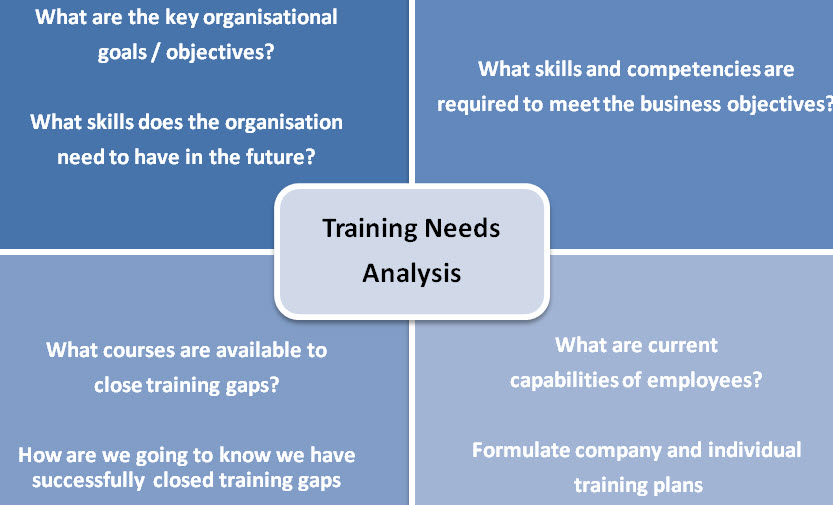Training needs analysis (TNA) is not a new concept in the corporate world and it has been used for decades for the skills enhancement of employees. Basically, it is an organized process that can be used by any organization for defining the training needs of its employees which also assures clear gap identification in the existing and desired state. An ideal TNA should represent the overall business objectives and strategy of an organization. An organization will need to ensure that accurate measures are taken to bridge the gap with the help of relevant training needs analysis questions that are designed for its employees.
Types of Training Needs Analysis Questions
Below we will review and discuss some categories of relevant training needs analysis questions that can be asked for employees.
- The first category is “What Skills are already possessed by the employees?” Now it is quite probable that our employees will have special expertise in some specific areas. So, it is important to know how we are going to identify the required training program for some particular skills. In this aspect, we can directly ask them as well as ourselves what skills are already possessed by the employees. We can also consider those skills that are essential for our organization to have a leading position in specific markets. At this point we should also reflect on the challenges that can be experienced by the employees while learning this new skill. With the help of these training needs analysis questions, we can clearly recognize what is lacking in our organization as well as employees. Likewise, it’s also a right time to explore the skills displacement across our working teams.
- The second category of the question is “Do we need the skills?” For proper training evaluation we must ask ourselves if the identified skills are necessary. No one will support to waste an organization’s resources and employees time on a skill that doesn’t result in any sort of benefit. In order to prevent this kind of situation we can ask ourselves and the employees ‘Will these skills be used in the daily routine?’ Of course, every skill is not used on a daily basis, but still it should be used in an adequate frequency to justify the time and effort allocated for its development. In addition to that, we must also consider the opposite side of the picture to have a clear understanding about its need. We can ask ‘What will be the impact on employees as well as the company if these skills are not learned?’
- After that it is important to address the previous efforts for training and development. So, our third category of training needs analysis questions will be about asking “Has the company conducted any previous training program?” Even if the former trainings efforts are not related to our current training objectives, we can still learn significant things by evaluating previous training practices and their outcomes. In this regard we can ask questions like: Has any training been performed already for this specific skill? Did previous training programs turn out to be successful? What were the evaluation methods for formed training programs? In this way we can avoid the mistakes that were made previously and go for the effective measures in the former training efforts.
- Furthermore, it holds paramount value to assess the individuals who are required to go through the training program. Therefore, our fourth category of the questions will be “Who needs to take the training program? The required persons can be few in numbers or a complete department might need the training. It is important to consider the fact that people learn differently and at a different pace. At this point we can ask: Is this training program required for an individual, an entire department or branch? How long it will take to learn this particular skill? Importantly, it is very crucial to save the employees from stress or boredom to increase to their morale, so we must also ask ourselves ‘How can we make this program interesting and engaging? By answering all these questions, we will be in a position to have a clear direction about the training program and by what means we can make the goals measureable as well as achievable. In addition to that, organizations must be aware of the fact that their employees have to do their daily jobs and achieve their assigned targets in a given time frame. Hence, it is important to design the training program in a way were there is a balance between the time for training and the day to day tasks.
- The fifth category of questions is “What is the accessibility level of our training program?” In this aspect, we can ask questions such as: What platforms are we going to utilize for facilitating the training process? How the training material can be made easily assessable? Is our training program mobile-friendly? What kind of content design do we intend to use?
- At last the most important question to address is “Was it a successful training program or not?” No matter what we eventually we will be left with as an outcome, it will depend on how effectively we implemented the training program by considering the above questions. We must always keep in mind that our ultimate goal is to improve the organization’s performance by bridging the identified gaps. After having the final results, we can evaluate what are the unique needs of our company and assess how well they are complemented by the employees new skills. By reviewing this process, we can define the most suitable course of action for future training programs.






